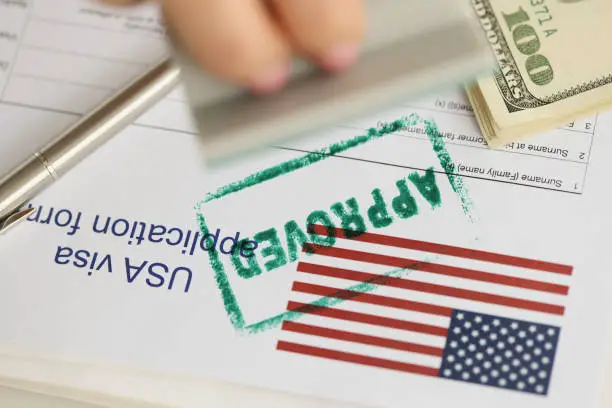Running a Little League program can be an incredibly rewarding experience, but it also comes with a range of challenges. One of the most important aspects of running a successful Little League is ensuring that your field is properly equipped for games, practices, and community events. One key element that often gets overlooked is proper field lighting. Little League lighting grants are an excellent way for leagues to secure the funds necessary to improve their field’s lighting, making games and practices safer and more accessible for players, coaches, and families.
In this post, we’ll dive into what Little League lighting grants are, how to apply for them, and why investing in proper lighting is a game-changer for your league.
Whether you’re just starting out or looking to upgrade your existing field, understanding the process and taking advantage of available funding opportunities is crucial.
Why Proper Lighting is Important for Little Leagues
Before we dive into the specifics of Little League lighting grants, let’s take a moment to understand why proper lighting is so important for Little League fields. Lighting is not only essential for playing games during the evening, but it also helps to create a safer environment for players, coaches, and spectators. Here are a few reasons why good lighting should be a priority for any Little League:
- Extended Playtime: Good lighting allows games to be played after daylight hours, which is especially important during the summer months when teams may need to play later in the day to avoid the heat. With proper lighting, fields become multi-use venues, not just during peak daylight hours but into the evening too.
- Safety: Adequate lighting helps to reduce the risk of accidents and injuries, ensuring that players, coaches, and fans can clearly see the field and make quick decisions. A well-lit field minimizes shadows and blind spots, preventing potential accidents.
- Inclusivity: Good lighting ensures that all players, including those who might work or attend school during the day, can participate in games and practices in the evening. This inclusivity boosts community involvement and gives more children the opportunity to play.
- Improved Atmosphere: High-quality lighting enhances the overall experience for everyone involved, making games more enjoyable for players and spectators alike. It creates a professional feel to the games, increasing local support and potentially drawing in more sponsors.
Consider this: a survey conducted by the Sports Safety Institute found that well-lit fields reduce injuries by up to 25%. This statistic showcases not only the importance of lighting from a safety perspective but also the potential insurance savings for leagues that ensure their fields are properly illuminated.
What Are Little League Lighting Grants?
Little League lighting grants are financial awards provided by various organizations, corporations, and government bodies aimed at helping fund the installation or upgrade of lighting on Little League fields. These grants are designed to reduce the financial burden on leagues, making it easier for them to ensure their fields are properly illuminated for safe, extended play.
Key Facts About Little League Lighting Grants:
- Target Audience: These grants are specifically for nonprofit organizations, schools, and recreational sports leagues that are part of the Little League program. They are designed with community sports improvement in mind.
- Types of Grants: Grants can be used for a variety of purposes, including the installation of new lighting systems, upgrading outdated systems, or adding additional lights to improve visibility. Some grants even focus on sustainable, energy-efficient solutions.
- Application Process: The application process for lighting grants can vary, but it generally involves submitting a proposal that includes details about the current state of your lighting, how the new system will improve the field, and a detailed breakdown of costs.
These grants typically cover a significant portion of the total project cost, sometimes up to 100%, though often some matching funds or contributions from the community are required. Knowing what each grant covers ahead of time can help you plan your proposal accordingly.
How to Apply for Little League Lighting Grants
Securing a Little League lighting grant can be an essential step toward improving your field, but it requires careful planning and an understanding of the application process. Here’s a breakdown of the typical steps involved in applying for these grants:
- Research Available Grants: Start by researching organizations and foundations that offer grants for youth sports and field improvements. Some of the top organizations to look into include:
- The Little League Baseball and Softball Grant Program: This program offers grants to local leagues for field improvement projects, including lighting. They provide resources and guidelines on their official website.
- The T-Mobile Little League Call Up Grant: This grant supports local leagues by providing funding for improvements, including lighting upgrades. It’s worth exploring as T-Mobile often supports community sports initiatives.
- Major League Baseball’s Field of Dreams Program: Occasionally, MLB sponsors field improvements at the youth level, including lighting systems. Their focus is often on creating connections between community leagues and the larger baseball organization.
Websites like GrantWatch and Instrumentl can be helpful in finding funding opportunities that match your league’s needs. They offer searchable databases where you can filter grants by category, location, and project type.
- Assess Your Needs: Before applying for a grant, assess your current lighting system. This involves:
- Evaluating the Current Setup: Take pictures and create diagrams of your field’s current lighting situation. How many lights do you have? Are there dark spots?
- Identifying Gaps: Determine where additional lighting is needed. Do certain areas of the field remain dark even during peak times? Is your current lighting energy-inefficient?
- Measuring Impact: Consider how improved lighting will affect the league. Will it reduce scheduling conflicts? Increase attendance? Improve safety?
- Prepare a Detailed Proposal: A solid grant proposal is key to securing funding. Be sure to include the following:
- Project Description: Explain the current lighting situation and why it needs upgrading. Include specific details about how the lighting improvements will benefit the league. For example, you might discuss how dark corners of the field have previously caused safety issues or prevented evening games.
- Project Goals: Outline how the new lighting will improve safety, extend playtime, and enhance the overall experience. Emphasize the community benefits—such as accommodating players’ schedules, reducing traffic congestion during early morning or late games, and boosting community morale.
- Budget Breakdown: Provide a clear breakdown of the costs involved in the lighting project, including installation, equipment, and labor. Show prospective funders that you have a realistic understanding of the total expense.
- Timeline: Lay out a timeline for the project—from securing funding to completing installation and starting use. It shows that your league is organized and prepared to implement the project quickly.
- Submit Your Application: Once you have all the necessary materials, submit your application according to the grant provider’s guidelines. Many organizations prefer digital submissions, but some may require hard copies. Be sure to double-check for any specific requirements or documentation that may be needed. Following guidelines to the letter can make a big difference in the success of your application.
- Follow Up: After submitting your application, follow up with the grant provider to confirm they received your proposal. Staying proactive by keeping them updated on any progress with the project and expressing gratitude for their consideration can leave a positive impression. This ongoing communication can sometimes even lead to additional support or guidance.
Commonly Funded Lighting Grant Projects
While every grant program has different requirements, some projects are more likely to be funded than others. These types of projects tend to receive more attention from grant committees due to their clear benefits and alignment with funding goals:
- Energy-Efficient Lighting Upgrades: Switching to LED lights or other energy-efficient solutions can save money in the long run. Many grant providers are more inclined to fund projects that reduce energy consumption and are eco-friendly. For instance, a study by the U.S. Department of Energy found that LED sports lighting consumes up to 50% less energy than traditional halogen or metal halide lamps.
- Safety Enhancements: Projects that focus on improving safety, such as adding lights to poorly lit areas or increasing coverage in high-traffic spots, often score well with funding organizations. Some safety grants specifically look for proposals that include CCTV and emergency lighting systems to monitor and protect young athletes.
- Accessibility Improvements: If your project includes lighting upgrades that make the field more accessible for players with disabilities, it may be more likely to secure funding. Grants often favor inclusive projects that benefit all community members, including those with special needs.
Examples of Successful Lighting Grant Projects
Several Little Leagues have successfully utilized lighting grants to improve their fields, transforming them into community assets. Here are a few detailed examples:
- Community Park League in California: This league used a combination of local sponsorships and a T-Mobile Little League Call Up Grant to fund the installation of energy-efficient LED lighting. The new lights allowed for evening games and improved safety, helping the league expand its season and offer more flexible scheduling options. After the upgrade, the league reported a 40% increase in evening attendance and a significant drop in minor injuries due to better visibility.
- Springdale Youth Sports League in Arkansas: They applied for a Little League Baseball and Softball Grant Program to upgrade their outdated lighting. The grant helped them replace old floodlights with modern, energy-efficient options that dramatically reduced their electric bill while providing better lighting coverage for night games. The league saw a 30% reduction in energy costs year-over-year and a boost in community events being held on the field during evenings.
- Sunnyvale Little League in Texas: Recognizing the need for safer play conditions, this league combined a local fundraiser with a grant from a community foundation focused on youth sports. They installed an advanced lighting system with motion sensors to conserve energy when not in use. The sensors also provided alerts for maintenance when lights dimmed, ensuring constant high performance. This proactive approach not only improved safety but also extended the usable hours of the field dramatically.
Tips for Improving Your Chances of Securing a Lighting Grant
Securing a grant can be competitive, but you can stand out with a well-prepared application. Here are some additional tips:
- Start Early: Many grants have specific application deadlines, so give yourself plenty of time to gather materials and put together a solid application. Starting early also allows you time to refine your proposal based on feedback from colleagues or mentors.
- Be Specific and Clear: When describing your project, be as detailed as possible. Use simple language that makes your goals and needs understandable to someone who may not be familiar with your league. Avoid jargon and overly technical language unless necessary, but if you must include technical details, explain them in layman’s terms.
- Show Community Support: Demonstrating that your project has the support of the local community (e.g., through letters of support, testimonials from parents and coaches, or volunteer involvement) can make a strong case for funding. Grants often look for projects that will have a lasting impact on their community, so evidence of community backing is valuable.
- Consider Matching Funds: Some grants may require or offer incentives for matching funds. Having additional financial support from local sponsors or fundraising efforts can make your proposal more attractive. For instance, if your community pledges to raise 20% of the project cost, this shows the grant providers that your league is invested in the project and reduces their risk.
- Utilize Data and Statistics: Whenever possible, support your proposal with data. For example, include statistics on how improved lighting reduced injuries in other leagues, or how energy-efficient lighting can reduce costs over time. Citing reputable sources, such as government energy studies or safety research, can add credibility.
- Leverage Grant Writing Expertise: If you have access to a mentor or an experienced grant writer, don’t hesitate to seek their advice. Sometimes a professional’s insight can help shape a more compelling proposal. Additionally, if you subscribe to newsletters or resources that specialize in grant writing, such as the Grant Writing Academy Newsletter, you’ll gain access to expert tips, strategies, templates, and tools that can significantly enhance your success rates.
Subscribe to the Grant Writing Academy Newsletter
Improving your chances at winning a Little League lighting grant doesn’t stop at understanding the basics. It involves continuous learning and adapting to changing requirements and best practices. If you want to stay ahead of the game and increase your league’s chances of securing funding, then I highly recommend subscribing to the Grant Writing Academy Newsletter.
By subscribing, you’ll gain access to:
- Tips: Practical, actionable advice to strengthen your grant proposals.
- Strategies: Step-by-step strategies for researching and applying for multiple grants.
- Templates: Easy-to-use templates for proposals, budgets, and timelines that you can adapt for your specific needs.
- Tools: Resources and software suggestions for managing grant applications, tracking deadlines, and storing documentation.
- Success Stories: Real-life examples and case studies from other leagues that successfully secured grants.
These resources will save you time, reduce stress, and dramatically enhance your grant writing skills. Subscribe today to ensure you never miss a critical piece of advice that could make the difference between a successful application and a missed opportunity.
The Future of Little League Lighting
As technology advances, the options for lighting systems expand. When thinking about grants, consider not only the current needs but also how technology might evolve. Incorporating smart lighting systems that can be controlled remotely, adjusting brightness based on game schedules, or even integrating solar panels to reduce energy costs are all innovative ideas.
Grants often favor proposals that include sustainable and forward-thinking elements, as they promise long-term benefits to the community.
Moreover, community involvement in the planning and execution phases can lead to additional fundraising opportunities and stronger applications. Involve local businesses, parents, and even students in fundraising efforts, planning committees, or volunteer days for installation. This not only strengthens your proposal but also solidifies community bonds.
Final Thoughts
Little League lighting grants offer an incredible opportunity for leagues to improve their facilities and enhance the experience for players, coaches, and families. By understanding the types of grants available, the application process, and how to improve your chances of receiving funding, you can light up your field and create a safer, more enjoyable environment for everyone involved.
Remember, applying for grants is a skill that gets better with practice and the right resources. With persistence, community support, and a willingness to learn from the best practices available through expert newsletters and guides, your league can significantly increase its chances of securing the funding necessary to make lasting improvements.
Don’t let a lack of proper lighting hold back your Little League’s potential. By embracing the opportunity that Little League lighting grants provide, you can bring your community together, ensure safety, and foster an environment where young athletes can thrive.
Subscribe now to the Grant Writing Academy Newsletter for more tips, templates, and strategies to boost your success rates. Illuminate your path to success, one grant at a time!






